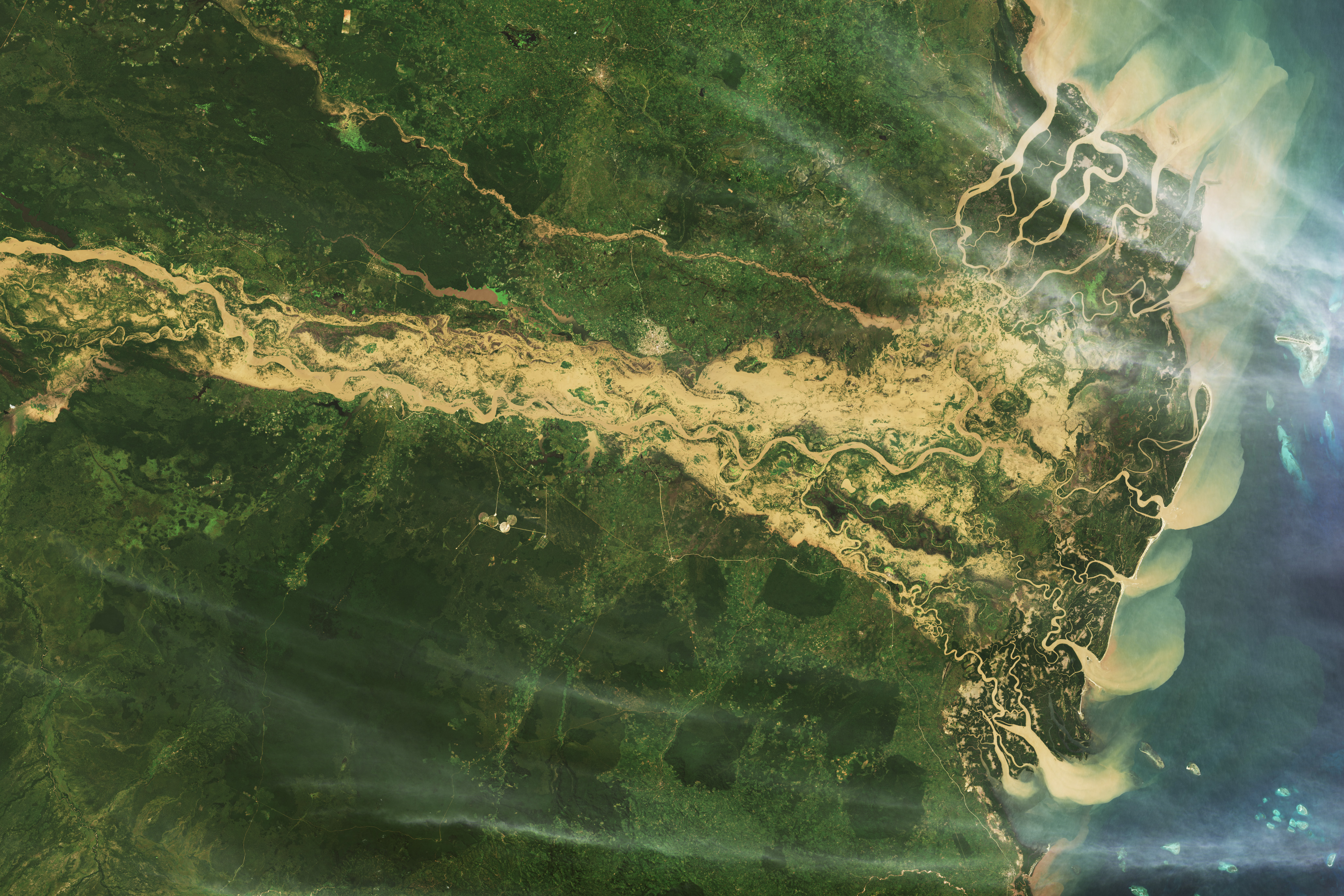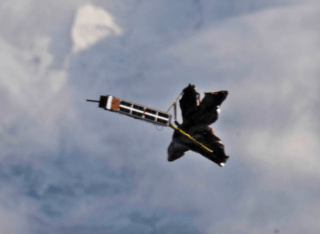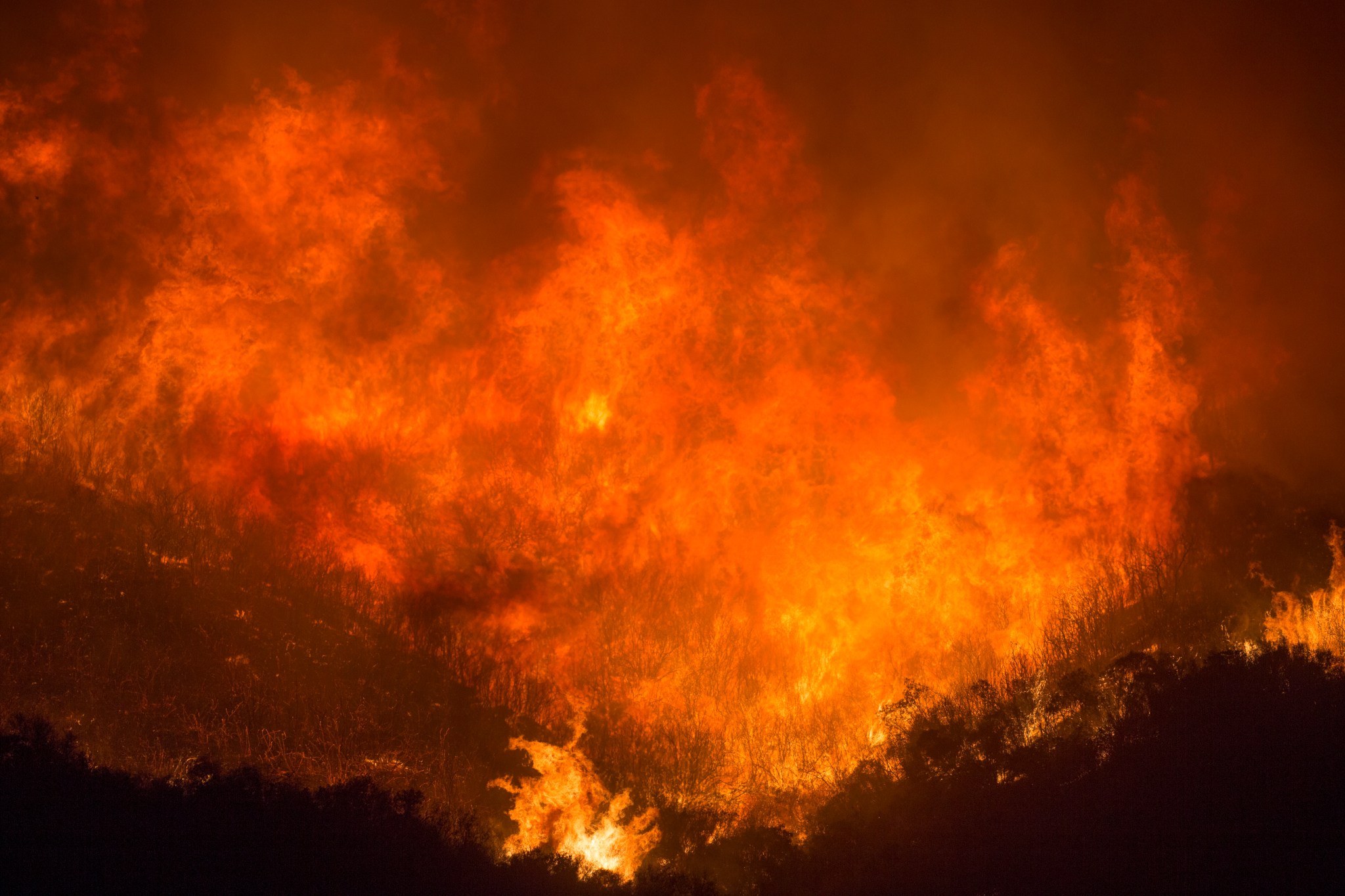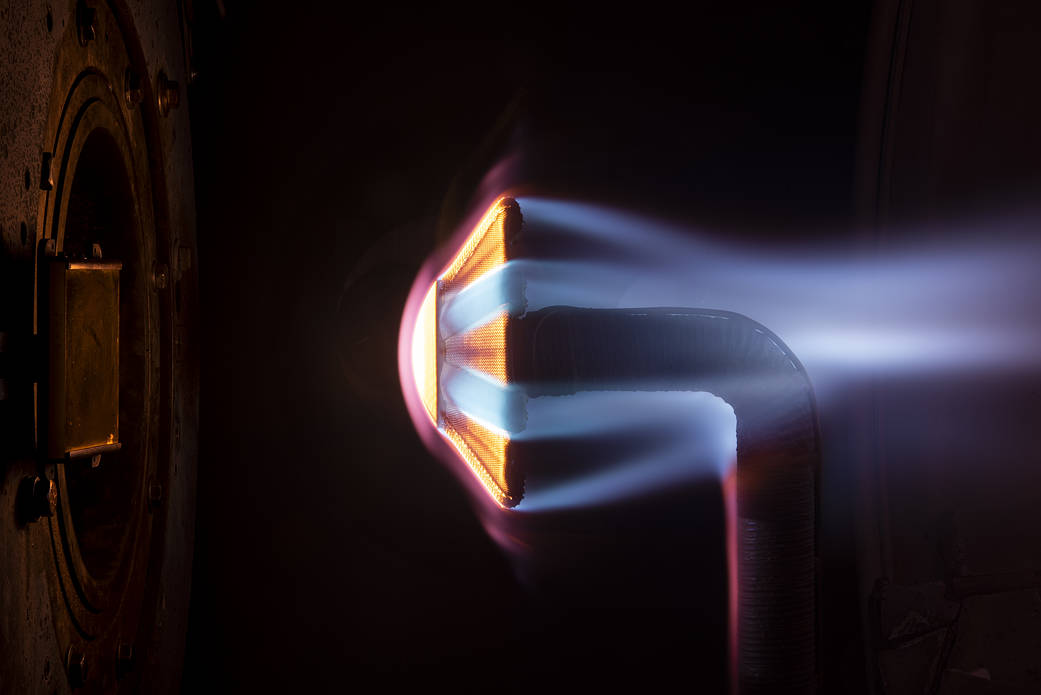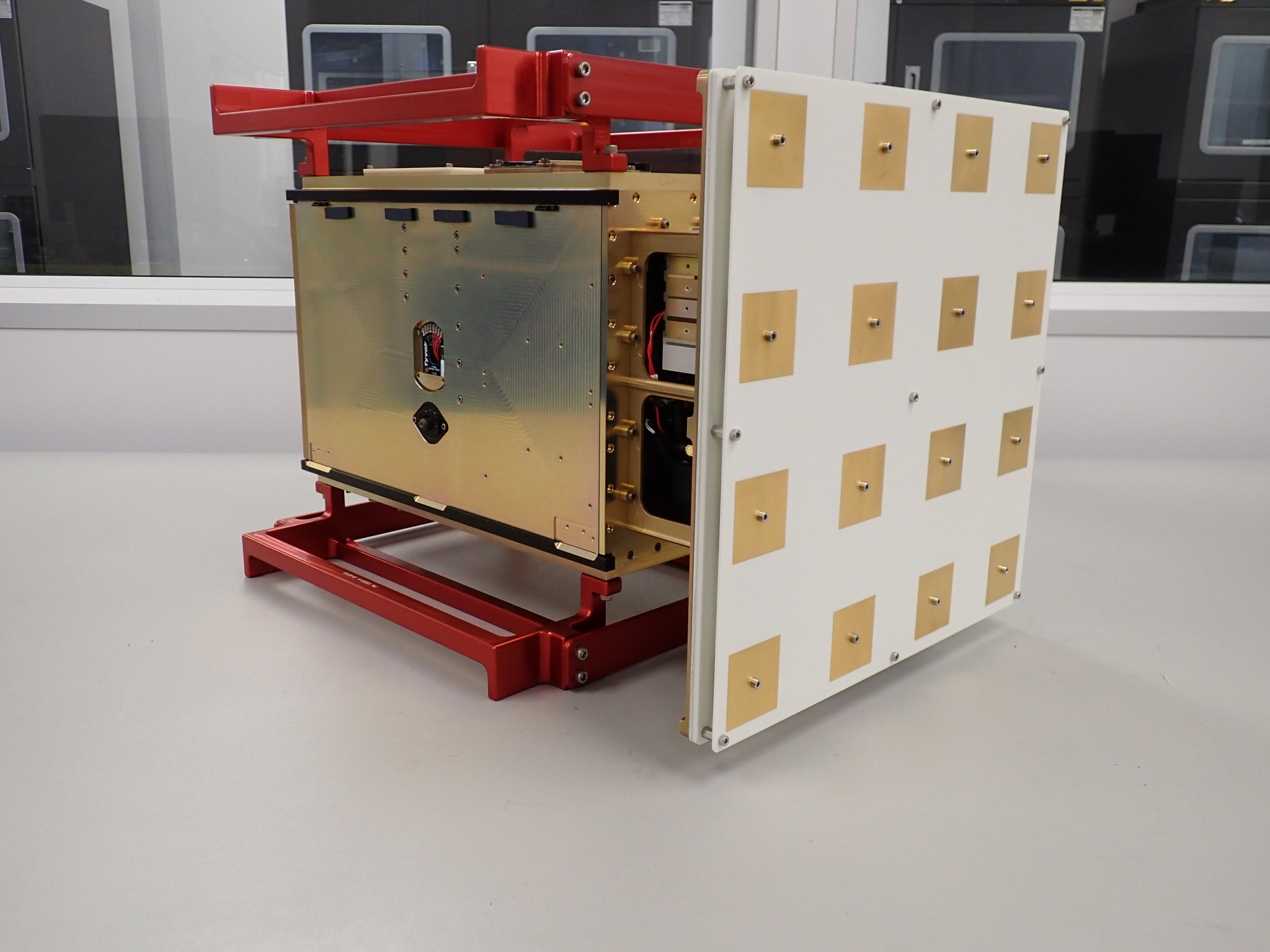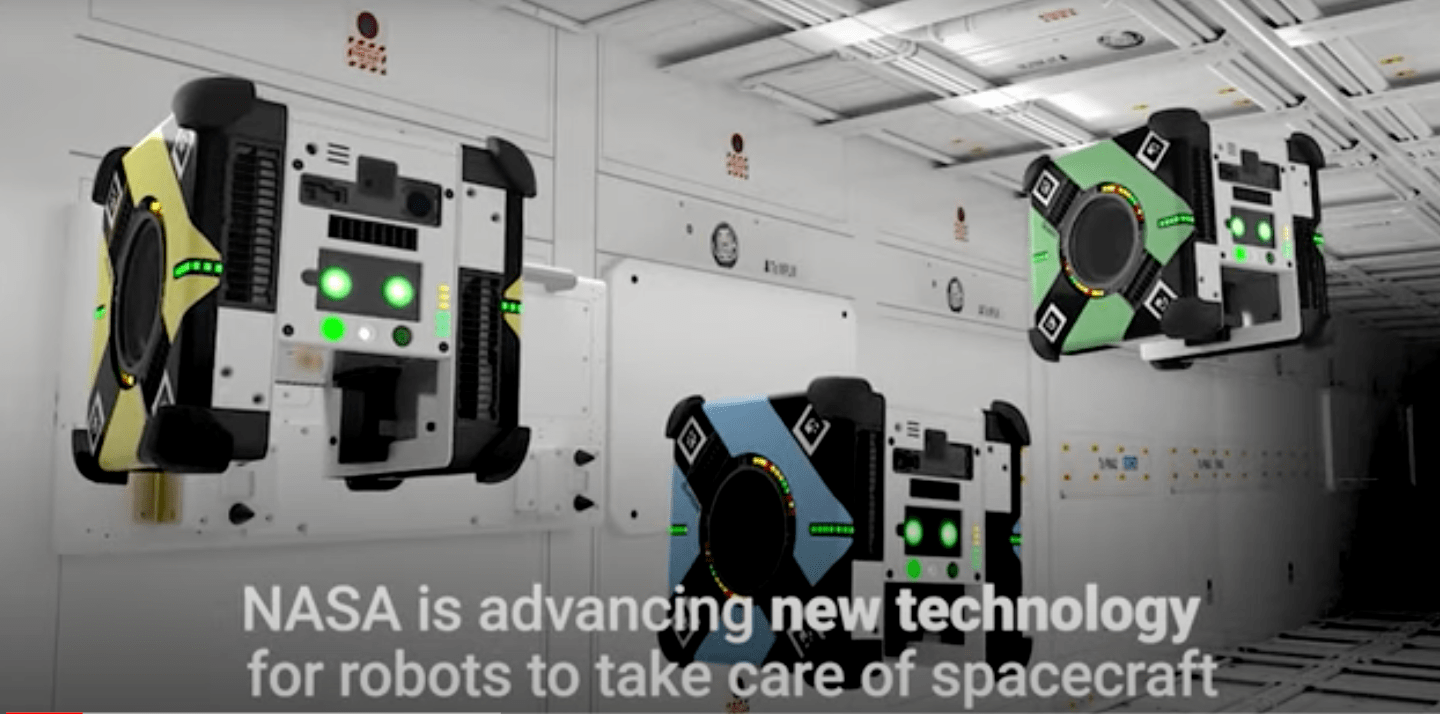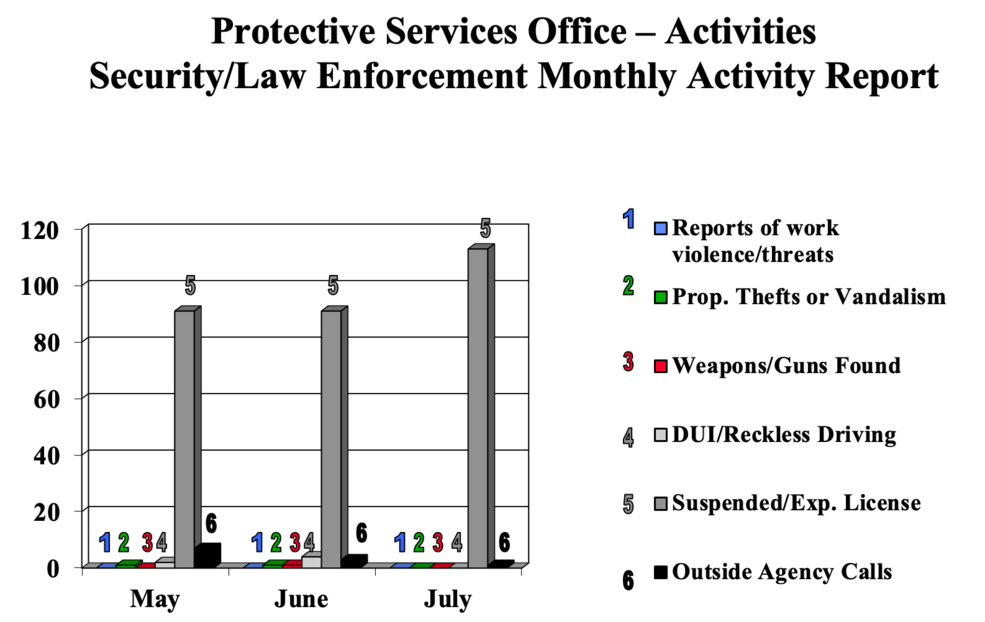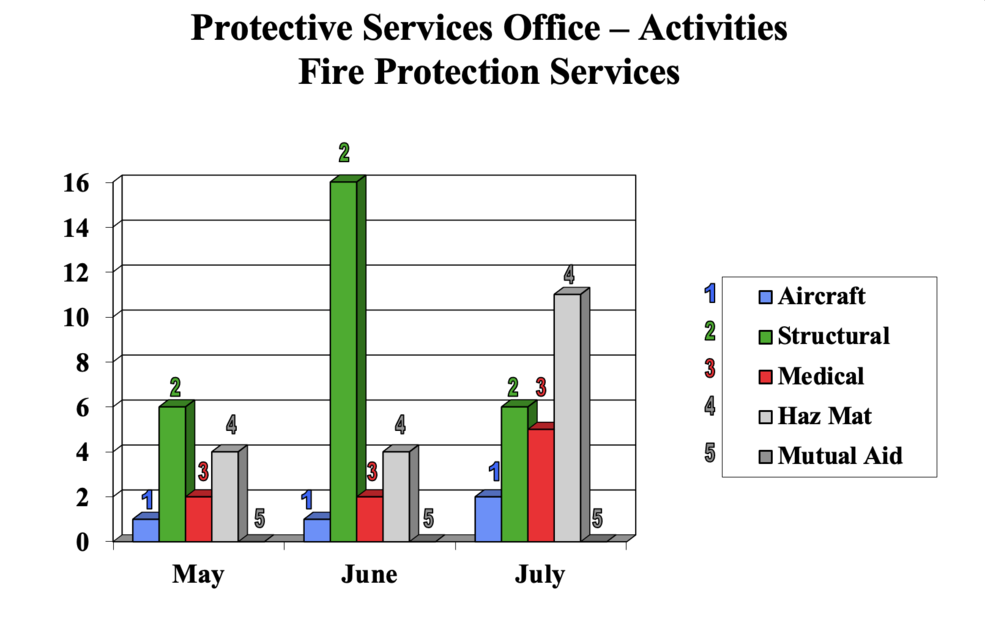August 2021 issue of Ames' newsletter, the Astrogram
TechEdSat-10 Wins SmallSat Mission of Year Award
Recently, the AIAA Small Satellite Technical Committee announced at the Small Satellite Conference that TechEdSat-10 has won its SmallSat Mission of the Year Award. The award is presented annually to the mission that has demonstrated a significant improvement in the capability of small satellites. Eligible missions must have individual satellite wet mass of less than 150 kg, and must have launched, established communication, and have acquired results from on-orbit after Jan. 1, 2020 00:00:00 UTC. To demonstrate “significant improvement,” nominations must show innovation in: spacecraft structural design, scientific instrument development, communications capability, attitude determination and control capability, intersatellite coordination, constellation or cluster management, onboard computing, or other mission aspects.
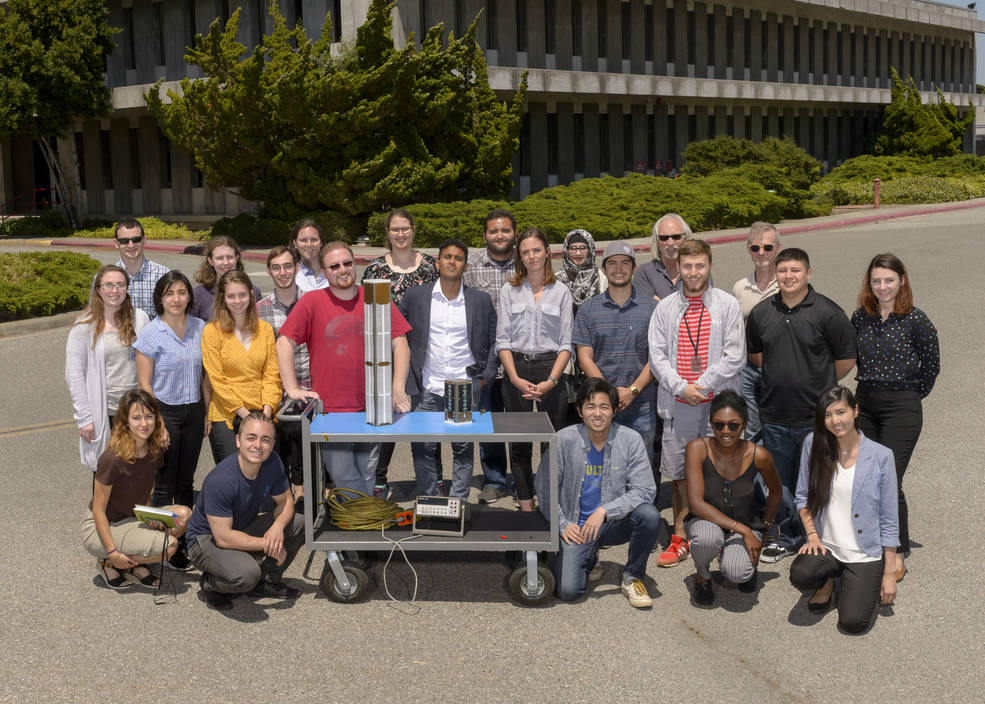
TechEdSat-10 is a six-unit CubeSat that deployed from the International Space Station on July 13, 2020. The mission demonstrated increased storage and power capabilities that could enable future science and exploration using small spacecraft beyond low-Earth orbit. Included on TechEdSat-10 are improvements over previous CubeSat technologies in the areas of communications and radio systems, and new propulsion techniques. As the tenth iteration in the Technology Educational Satellite series, TechEdSat-10 builds upon a history of the program’s innovative work with early career researchers, students, and volunteers.
TechEdSat-10 contains 150 watt-hours of power storage, eight radios, nine processors, and a graphics processing unit. Additionally, the small satellite carries four cameras, including a stereoscopic virtual reality camera experiment.
Like several TechEdSat missions before it, this mission demonstrated the exo-brake technology in its largest iteration to date. The exo-brake is designed to deploy an umbrella-like “brake” to increase drag and take a small satellite out of orbit. This mission, the exo-brake can be controlled or modulated by commands from the ground in order to target a re-entry point. In the future, this could enable sample return missions from orbit and future planetary missions.
Small satellites, including CubeSats, provide a low-cost platform for scientific research, technology demonstrations, and educational investigations. NASA’s small satellite initiatives develop missions to observe Earth, study the Moon, and test advanced instruments like high-bandwidth laser communications and autonomous navigation. NASA also funds rideshare launch opportunities for small satellites, including student projects. With this increased access to space, students can gain hands-on experience in satellite development and operations.
NASA’s Small Spacecraft Technology program within the agency’s Space Technology Mission Directorate, funded five of the technologies on TechEdSat-10.
NASA Tools Could Help Fight Fires – from the Sky and the Ground
by Abigail Tabor
The fire wasn’t real that day in the rolling hills of Northern California, already turning crisp and brown at the beginning of May. But it offered the perfect opportunity for a group of NASA researchers to test the technology they’ve been building.
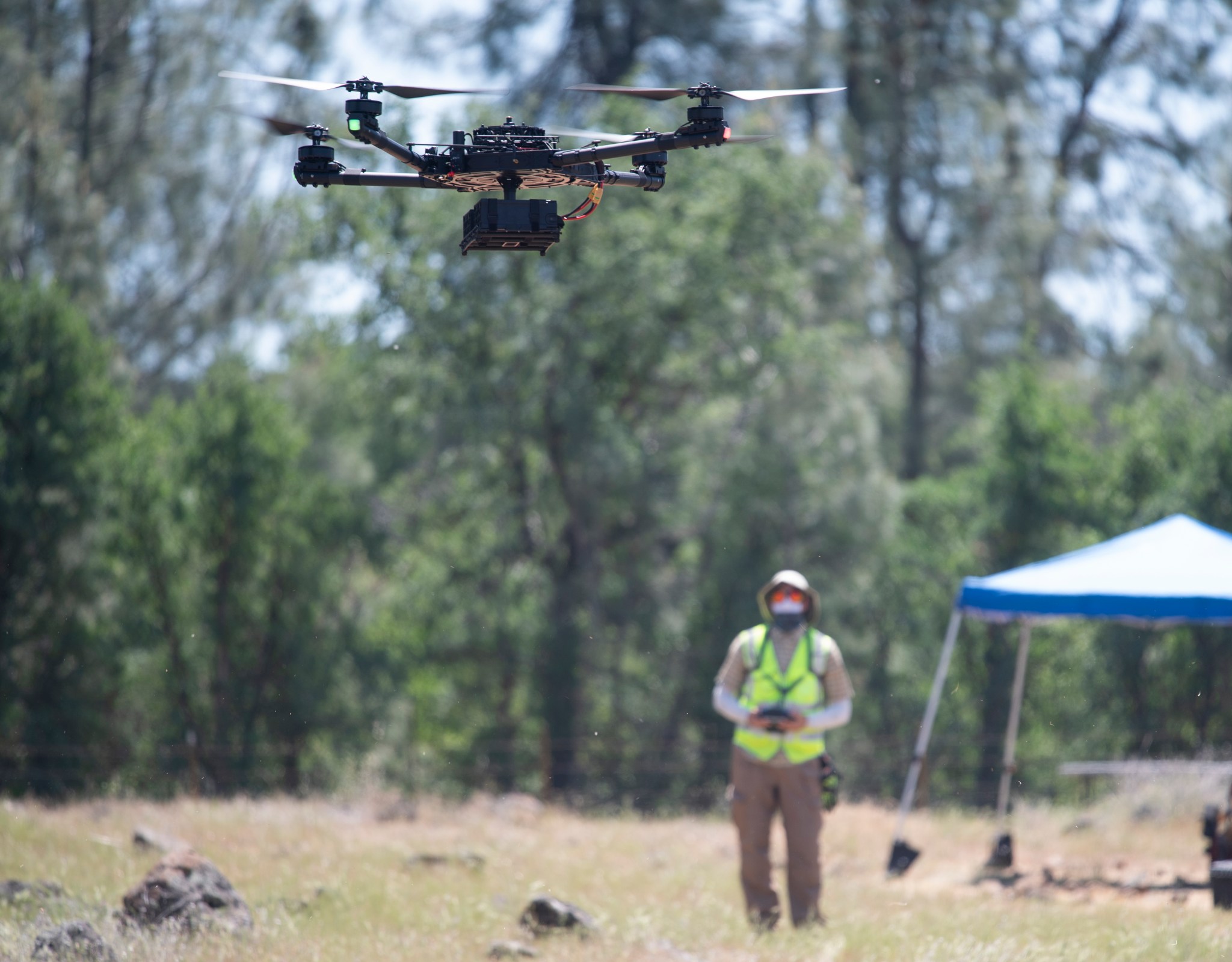
Their demonstration at a wildfire simulation outside Redding, California, showed how emergency responders of all kinds could work more safely and effectively using the prototype tools of NASA’s STEReO project – Scalable Traffic Management for Emergency Response Operations.
The faux fire, marked out with orange flags and smoke flares, was being used for aerial firefighting training by STEReO’s partners at the California Department of Forestry and Fire Protection, or CAL FIRE, and the U.S. Forest Service. The exercises focused on the role in wildfire response of an air traffic controller in the sky.
Circling above the scene, this person watches from the window of a plane. They visually track numerous aircraft and juggle their requests – over multiple radio frequencies – to fly near the fire or drop fire retardant, all while steering everyone clear of the firefighters on foot.
While the partners’ trainees were learning this demanding job, NASA’s STEReO team got to work testing tools that could one day assist them.
New Solutions Require New Coordination
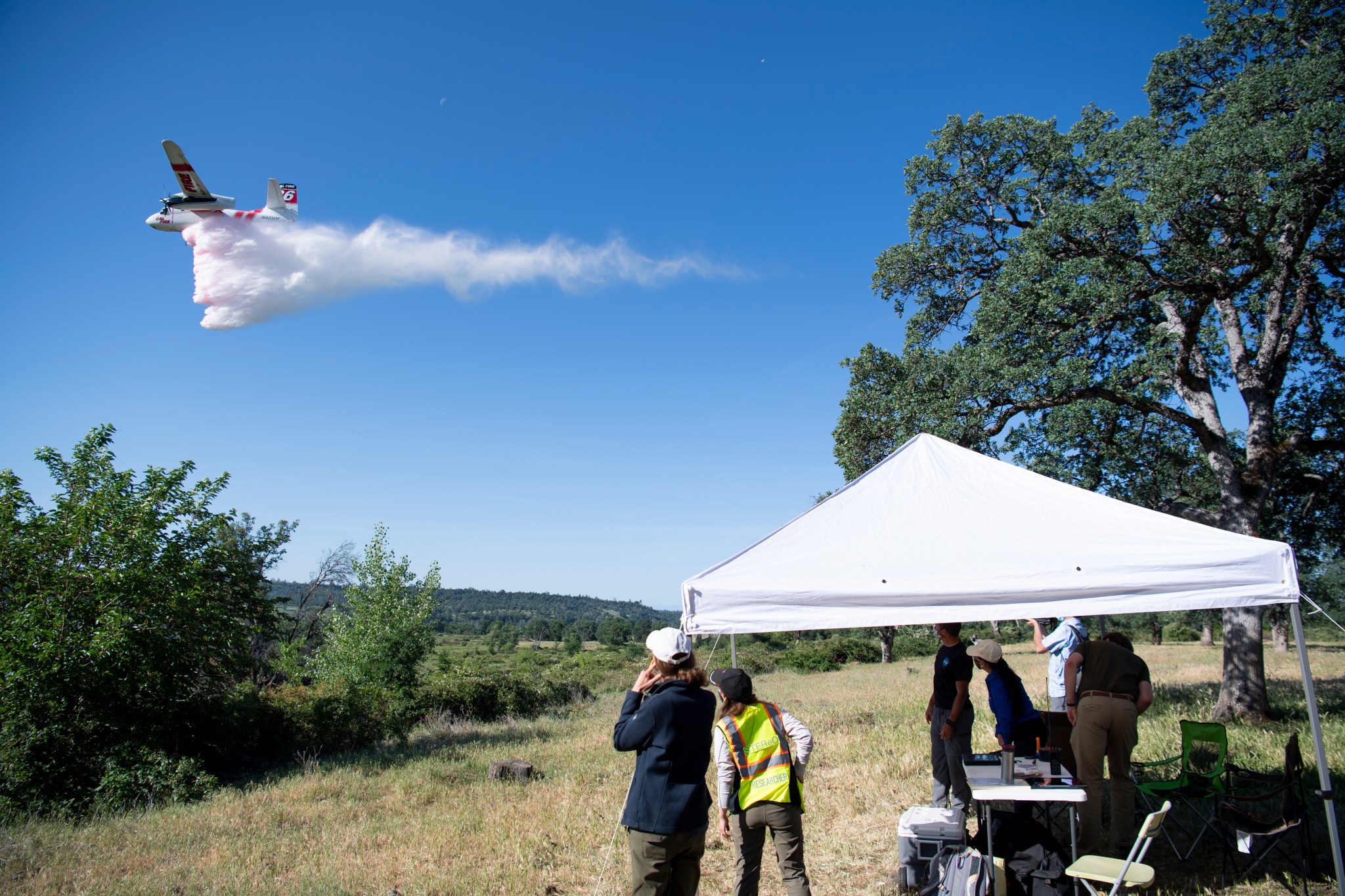
Wildland firefighting is no joke, and, today, critical decisions about dangerous situations rely in part on reports that come in from teams in the field. New technologies could help here: imagine, instead, drones sending real-time data from the perimeter of a forest fire to determine where crews will be most effective.
But that means even more moving parts to coordinate and, without the tools to do it, drones have largely had to stay on the sidelines of wildfire incidents when piloted aircraft are around.
“Planes and helicopters fighting fires have had no way of knowing the drones’ whereabouts,” said Joey Mercer, STEReO’s principal investigator at NASA’s Ames Research Center in California’s Silicon Valley, “but STEReO provides a way to see all operations responding to a disaster, in the air and on the ground.”
It also sends out alerts to signal potential issues, like a plane getting close to a drone. STEReO is building on the agency’s expertise in drone traffic management to develop these tools that let all elements of an emergency response stay in close contact and out of each other’s way.
The result is a system that can be deployed during and after emergencies, from fires to hurricanes, wherever they may be.
“STEReO is a portable system,” said Mercer, “and we’re developing a sort of ‘bring your own internet’ capability. That means the system works without high-speed internet access from the usual providers, which is likely to be lacking in a remote area struck by wildfire or a city following an earthquake or major storm.”
Firefighting in the Air, on the Ground, and on Screen
The project also created software tools that show in real time which operations are happening and where. Teams responding to a disaster can follow the action on their own screens, with a data display like a cell phone map in satellite mode. Moving icons show aircraft and humans at work, and the areas where drones will fly are marked.
From April 26 to May 7, 2021, the STEReO team got to see their tools in action in the most realistic setting yet: working alongside CAL FIRE and Forest Service firefighting teams in training.
In this part of Northern California’s countryside cell phones have only sketchy coverage, so STEReO’s portable internet would definitely be needed. The team arranged their communications equipment strategically and proved that the area of a fire, even in hilly terrain, could be blanketed with STEReO’s wifi coverage.
Above them, firefighting planes and helicopters flew in coordinatio
n with NASA drones. STEReO tracked them all, along with ground crews and some simulated aircraft for added complexity.
By the end of the demonstration, STEReO’s partners had seen how the technology could work for them in a real-world setting, and which tools would help them most when fires strike.
New Technology for a Growing Need
This work, which is led by Ames in collaboration with two other NASA centers – Langley Research Center in Hampton, Virginia, and Glenn Research Center in Cleveland – is a concept study under NASA’s Convergent Aeronautics Solutions project. The CAS activity is designed to determine STEReO’s feasibility, and the results will help determine whether to pursue further development.
Support from CAS is something like a start-up investment for technology exploration government research is well suited for.
“For STEReO, we built basically four or five individual ‘products’,” said Mercer. “We designed them based on input from our partners, and, after seeing how it all came together during the flight demonstration, they identified the products they needed most. This was a low-cost way of connecting technology still in development with their immediate needs – something NASA is particularly good at.”
As climate change impacts extreme weather events, there may be a growing need for tools like those STEReO is creating. The team will continue developing the system, aiming to let its partners test some of the tools independently next year.
By applying NASA technologies to responders’ most critical needs, STEReO’s creators hope to let them work together seamlessly, helping save property, homes, and lives.
ADEPT’s Spiderweave Material Tested at Arc Jet Facilities
by Frank Tavares
The team behind the “umbrella-like” deployable heat shield design called ADEPT, or the Adaptable, Deployable, Entry and Placement Technology, is testing out a new material to deliver science payloads on future missions to Mars and beyond.
Called Spiderweave, the new woven fabric will make it safer for larger vehicles to safely pass through the atmosphere of more distant locations. It can also be packed up at launch and stored in a compact space. When sending science to other worlds, saving space and enabling safer atmospheric entries are top priorities. ADEPT could help achieve both of these goals.
Previous ADEPT heat shield iterations involved stitching together individual panels to comprise the heat shield. But engineers found that could often lead to points of increased stress and other discontinuities within the material. Spiderweave uses a new design architecture where materials are continuously woven into the heat shield’s fabric, avoiding these issues.
This summer, Spiderweave was put to the test in the arc jet facilities at NASA’s Ames Research Center in California’s Silicon Valley, where the ADEPT team observed how the material held up when exposed to temperatures above 3,000 degrees Fahrenheit. Those extreme temperatures mimic the conditions a vehicle experiences when entering a planetary atmosphere.
Building on the previous work of the ADEPT project, including a sounding rocket flight test in 2018, supported by NASA’s Flight Opportunities program, where the heat shield was deployed in space and safely returned to Earth, the Spiderweave material is making science possible on worlds both near and far.
ADEPT is funded by the Game Changing Development program within NASA’s Space Technology Mission Directorate, with support from the Flight Opportunities program. The textile company Bally Ribbon Mills developed the Spiderweave Material as a part of NASA’s Small Business Innovation Research program.
CAPSTONE’s CubeSat Prepares for Lunar Flight
by Gianine Figliozzi
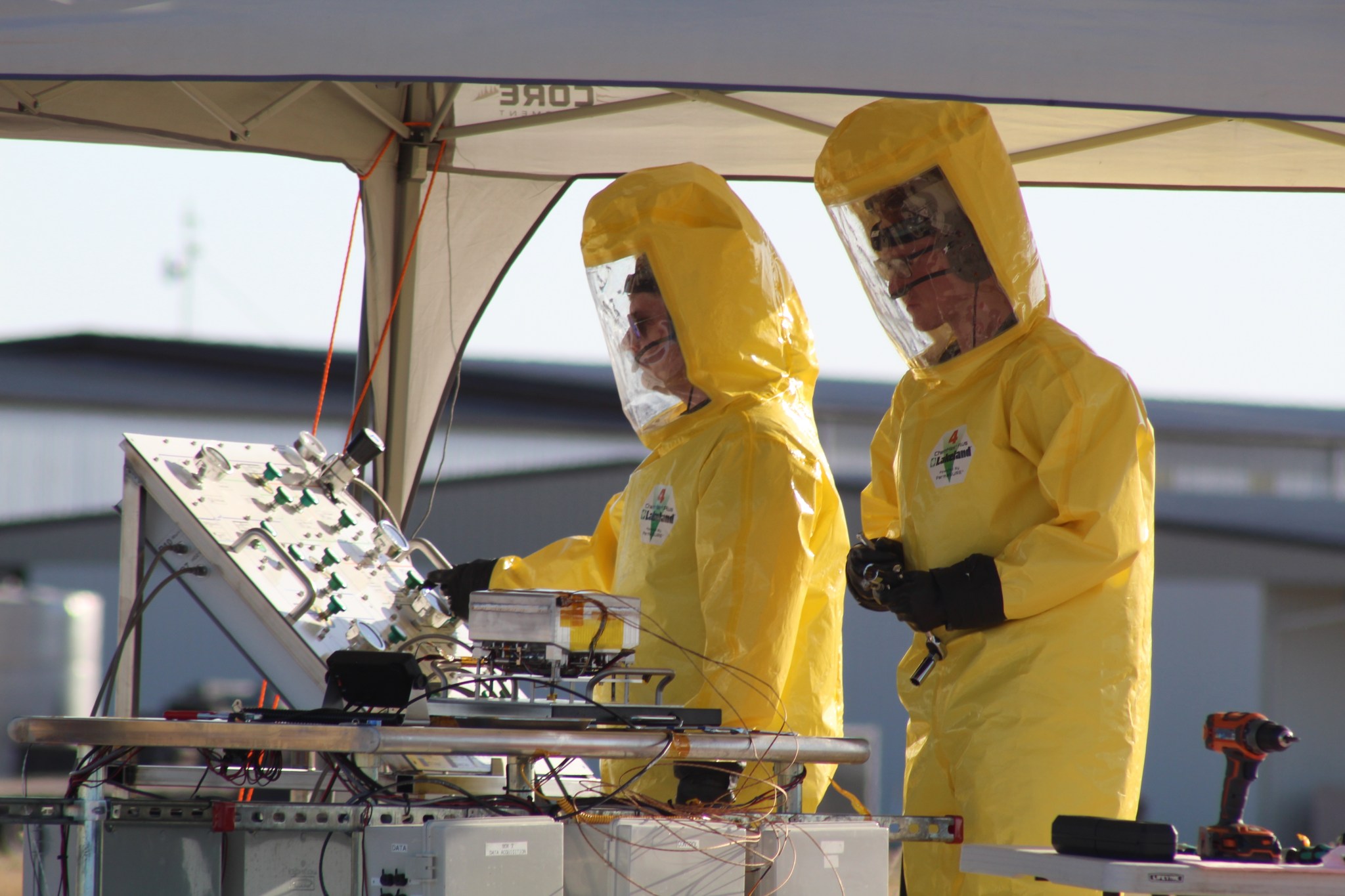

Small spacecraft will play a big role in lunar exploration, including a Moon-bound CubeSat launching later this year.
The Cislunar Autonomous Positioning System Technology Operations and Navigation Experiment, or CAPSTONE, mission team is making the final preparations for the spacecraft that will make CubeSat history over a series of technological and operational firsts for the small platform.
Planned for launch in 2021, CAPSTONE will fly in cislunar space – the orbital area near and around the Moon – and demonstrate an innovative spacecraft-to-spacecraft navigation technology. CAPSTONE also will test out a unique lunar orbit that Gateway will use as the Moon-orbiting outpost for NASA’s Artemis program.
CAPSTONE will use a hydrazine-fueled propulsion system during most of its three- to four- month journey to the Moon. This line of propulsion system, developed by Stellar Exploration Inc. of San Luis Obispo, California, is a recently developed and flight-proven system developed for use on CubeSats. The team recently completed a fueling and final test-fire of CAPSTONE’s propulsion system at Stellar Exploration’s facility and is integrating the system with the spacecraft.
But before CAPSTONE fires its own thrusters, Rocket Lab’s Electron rocket will launch the mission from Earth carrying the CAPSTONE spacecraft integrated onto its new Lunar Photon upper stage/spacecraft. For the mission, Lunar Photon will serve as an upper stage to get CAPSTONE to a highly efficient ballistic lunar transfer trajectory designed by Advanced Space of Colorado. About seven days after launch, after a series of orbit raising maneuvers and the final trans-lunar injection burn, Photon will release CAPSTONE. After the deep space, low energy transfer, the CAPSTONE spacecraft will insert itself into the near rectilinear halo orbit. At the same time, Lunar Photon will continue to a separate orbit for its safe disposal.
The CAPSTONE spacecraft is fast approaching completion. Near-term plans include continued integration, testing, and international shipment of the spacecraft in late September. Rocket Lab has identified its Launch Complex 1 in New Zealand as the CAPSTONE launch site. Onsite launch preparations will include checkouts and fueling of the CAPSTONE spacecraft and its subsequent integration with Photon.
In May 2021, New Zealand signed the Artemis Accords with NASA – a set of principles that reinforce and implement the 1967 Outer Space Treaty. The agency aims to assemble the broadest and most diverse international space exploration coalition in history. To date, 12 nations have signed the accords, and conversations with other nations are ongoing.
CAPSTONE is commercially owned and operated by Advanced Space in Westminster, Colorado. It represents an innovative collaboration between NASA and industry to provide rapid results and feedback to inform future exploration and science missions. Tyvak Nano-Satellite Systems of Irvine, California, is building the microwave oven-sized 12-unit CubeSat platform.
NASA’s Small Spacecraft Technology program within the agency’s Space Technology Mission Directorate funds the demonstration mission. The program is based at NASA’s Ames Research Center in California’s Silicon Valley. Advanced Exploration Systems (AES) within NASA’s Human Exploration and Operations Mission Directorate funds the launch and supports mission operations. The Launch Services Program at NASA’s Kennedy Space Center in Florida manages the launch service.
The Association for Women Geoscientists to Present the 2021 Professional Excellence Award to Dr. Jennifer L. Heldmann
by Maria Lopez
Dr. Jennifer L. Heldmann was selected to receive the 2021 Professional Excellence Award in Government from the Association for Women Geoscientists, or AWG. This award is presented to an individual who demonstrates excellence in the following areas: breadth and depth of professional accomplishments, mentoring of other geoscience professionals, outreach and service activities, and membership in professional societies.
Heldmann’s research focuses on dominant geologic processes sculpting the Earth, our Moon, and Mars, namely impact cratering and volcanism, as well as the study of water and ices on these planetary bodies for intrinsic scientific merit, relevance for astrobiology and the search for life beyond Earth, and as a resource to enable sustained human exploration of the Moon and Mars. Heldmann serves as the principle investigator of multiple analog research projects, having conducted fieldwork in the High Canadian Arctic, Antarctica, Atacama Desert, Mojave Desert, Australia Outback, Iceland, Australia, Svalbard, California, Arizona, and Utah, among other locales. As a leader in the realm of planetary analog fieldwork, Heldmann co-founded and leads the NASA Analogs Focus Group as well as the NASA Ames PLANETAS (PLANetary Exploration Through Analog Science) laboratory.
Heldmann’s research projects also have directly impacted spaceflight missions, the MVP (Mojave Volatiles Prospector) project (principle investigator Heldmann) simulated a lunar polar rover mission, which formed a scientific and operational basis for the upcoming NASA VIPER (Volatiles Investigating Polar Exploration Rover) lunar rover mission. Heldmann also supports NASA’s Artemis program to return humans to the surface of the Moon, and the inclusion of astronauts and field activities such as astronaut training exercises, testing of handheld tools for EVA (extravehicular activity), assessment of mission operations structures for human spaceflight – all being incorporated into NASA’s plans to return to the Moon through Heldmann’s participating in multiple NASA Artemis activities.
Most notably, Heldmann demonstrates a committed track record to mentoring geoscience students and professionals. Heldmann’s recent projects, FINESSE and RESOURCE, are comprised of more than 100 science and engineering professionals plus dozens of students. Heldmann has provided strategic vision and leadership for these successful projects while simultaneously mentoring individuals. As an advisor for the NASA Postdoctoral Program, or NPP, her NPP post-docs have gone on to be successful contributors to our community. Heldmann has nurtured the careers of scientists and advocated for their hires as NASA civil servant scientists in geoscience, supported countless undergraduates and graduate students through internship opportunities at NASA, and has supported teachers and students on NASA analog expeditions through the Spaceward Bound program where she brings students and teachers into the field to conduct geology fieldwork directly with the NASA team.
Heldmann also is committed to promoting an equitable, diverse, and inclusive scientific workforce, supporting multiple projects to mentor geoscience professionals from underserved and underrepresented communities. For example, Heldmann’s RESOURCE research team includes collaboration with Howard University (an HBCU) in activities including the development of a virtual community of practice focused on NASA Subject Matter Experts, or SMEs, of color, the design of STEM resources to cultivate underrepresented students’ interest in space science and aerospace careers, and the organization of secondary school teacher workshops to encourage minority student populations to enter STEM fields. Heldmann actively participates in NASA EPSCoR programs to provide funding to jurisdictions that have not participated equitably in competitive aerospace and aerospace-related research activities. Furthermore, she has served as a panel reviewer for multiple NASA MUREP (Minority University Research & Education Project) programs to engage underrepresented populations through targeted grant programs.
In addition, Heldmann is demonstrably committed to education, outreach, and service. She routinely participates in public events to discuss the excitement of geoscience research with the broader public. She serves as an SME for the NASA Science Activation team to bring scientific content to a network of Community Colleges across the nation and as a reviewer for the Space Camp Hall of Fame Scholarship Fund to award deserving students the opportunity to attend Space Camp. She was an invited guest on the NASA “Gravity Assist” podcast to discuss searching for water on the Moon with NASA’s Chief Scientist. Heldmann delivered a public talk in Fall 2020 for the Lunar & Planetary Institute’s Cosmic Exploration Series regarding lunar geology and NASA’s VIPER mission to the Moon. In 2019 Heldmann gave a public talk in Reykjavik, Iceland, regarding Moon and Mars exploration with humans and robots and how fieldwork in Iceland is helping to reduce risk and test scientific theories for future missions.
Heldmann served as an invited panelist at the Metropolitan Museum of Art in New York City to discuss lunar geoscience as related to The Met’s exhibit titled “Apollo’s Muse.” She served as an invited panelist aboard the USS Hornet, that picked up the Apollo 11 astronauts after splashdown upon their return to Earth, to celebrate the 50th anniversary of Apollo at a massive public event and highlighted the geologic insights gained from the Apollo program. She also gives talks to university students to share the excitement of a career in planetary geoscience, such as the Colgate University STEM Career event in NYC and an invited talk to the Massachusetts Institute of Technology regarding planetary science analog fieldwork. She was featured in “Time for Kids” magazine and routinely conducts presentations for school-age students, spreading the excitement of geoscience and geology fieldwork.
Heldmann is richly deserving of the 2021 Professional Excellence Award in Government from the Association for Women Geoscientists to be presented at the AWG Awards Ceremony, which will be held in conjunction with the Geological Society of America Meeting. In addition to inspiring early career professionals and students, Heldmann inspires the entire Ames community and agency to share our increased understanding of the universe and our place in it with the broader community, while opening doors for maximum inclusion.

Meet ISAAC, Integrating Robots with the Space Stations of the Future
by Frank Tavares
In April 2021, Bumble, one of the free-flying Astrobee robots aboard the International Space Station, was put to the test to investigate a simulated anomaly. In the simulation, the station’s life support systems detected a high concentration of carbon dioxide. A similar situation in reality could be very dangerous for the seven people who are living and working aboard the microgravity laboratory.
During the test, the small, cube-shaped robot adeptly navigated the station to find the location designated as a “vent” used for cabin air circulation, and used computer vision to automatically detect the foreign object blocking the vent – an “astronaut sock,” represented by a printed image of a sock. Then, Bumble called for help to clear the blockage. For its next test, Bumble completed a survey of Bay 6 of the space station’s Japanese Exploration Module, building a high-resolution multi-sensor 3D map. During this journey, Bumble found itself bumping into and untangling itself from stray cables, and coping with simulated space-to-ground communication interruptions. It ultimately persevered and completed its mission objectives, with a little timely help from ground operators.
This simulated fault scenario marked the end of the first phase of testing for software designed to enable autonomous operations of a spacecraft’s operating and robotic systems. The software’s name is ISAAC – the Integrated System for Autonomous and Adaptive Caretaking.
“ISAAC is far more than just a management tool for our robotics and spacecraft systems,” said Trey Smith, the project manager for ISAAC at NASA’s Ames Research Center in California’s Silicon Valley. “Our long-term vision is that it can transform a spacecraft into an autonomous robotic system itself.”
NASA’s future Artemis missions to the Moon and beyond will take humans farther than they ever have before – and a host of robotic and mechanical systems will go with them. On the space station, much closer to home, astronauts have been able to stay full time, surpassing 20 years of continuous human presence – something that won’t be possible in deep space for some time. How can future spacecraft operate smoothly without that consistent human touch? ISAAC aims to deliver technologies to enable remote and autonomous caretaking during long periods of time when the astronauts are not aboard to perform maintenance, logistics management, and utilization tasks, as well as when communication with ground controllers is limited or simply unavailable.
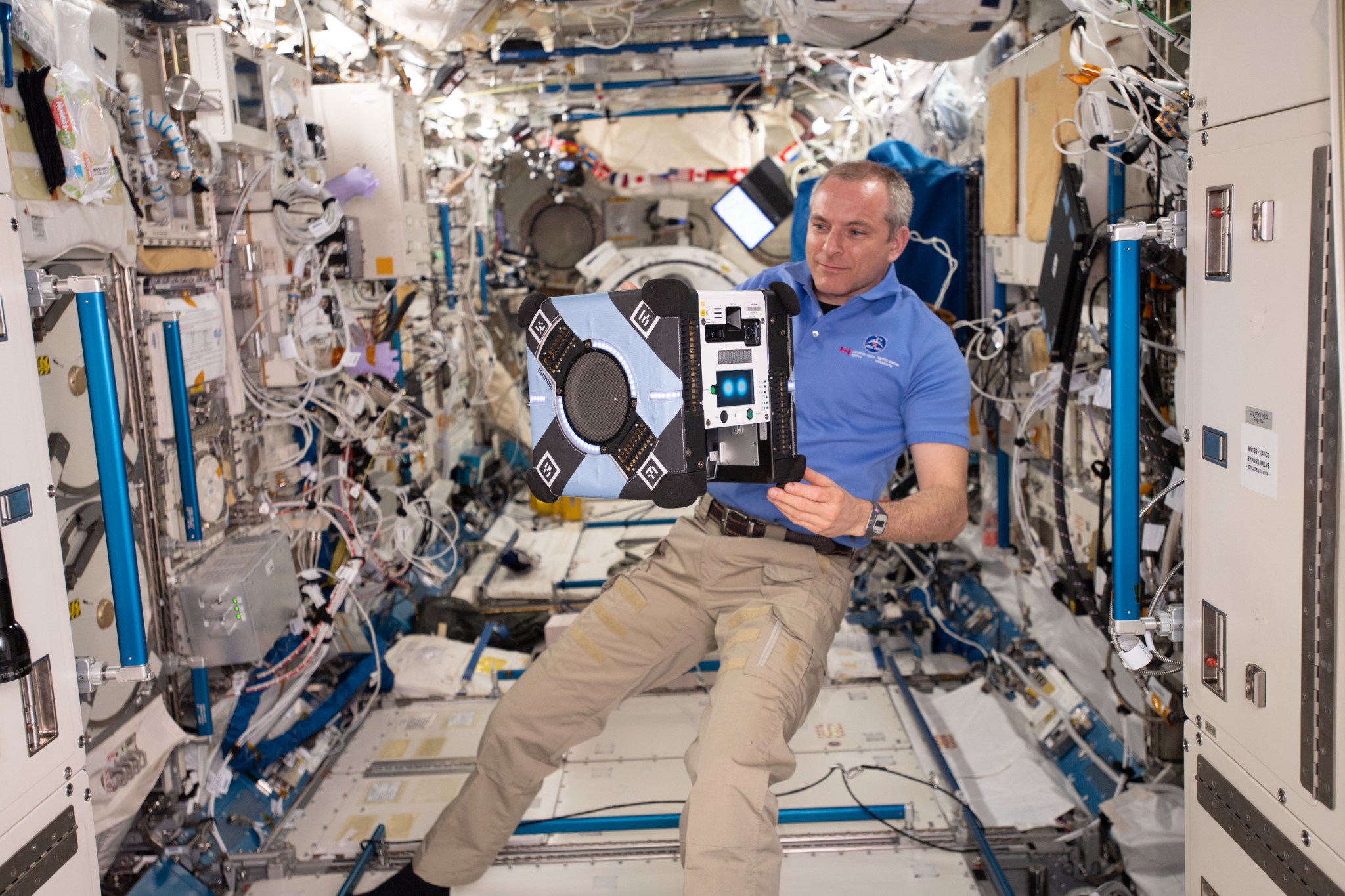
NASA’s future missions will venture farther and farther away from Earth. This means some spacecraft and stations, like the agency’s Gateway outpost, will not be continuously crewed as the space station is. Gateway, which will orbit near the Moon and be a model for future missions to Mars, may only host a human crew six weeks out of a year but will still need to be maintained year-round.
The series of demonstrations NASA conducted with ISAAC on the space station this spring that culminated with Bumble’s journey used both the station’s systems and robotics to autonomously work through potential scenarios in which NASA may want to use ISAAC on future stations. The latest demo was the final milestone of ISAAC’s first phase of testing, with more to follow in the future, ultimately bringing this technology to a place where it can be used for future deep space missions.
The ISAAC team is now engaged in its second phase of testing aboard the station, which focuses on managing multiple robots as they transport cargo between an uncrewed space station and an uncrewed visiting cargo spacecraft. In addition to testing ISAAC with these new variables, the team is adding an improved operator interface to simplify managing the vehicle-robot systems. In the third and final phase of testing, the team will throw even more difficult fault scenarios at ISAAC, such as mock cabin air leaks or fires, and develop robust techniques to respond to anomalies that occur when responding to these simulated crises.
Life today on the space station is one of near-constant communication – between astronauts, robots like the free-flying Astrobees, station systems, science teams on Earth, and more. Human controllers on Earth manage many of these complex schedules and systems, but in the future, when NASA travels to further destinations where humans won’t always be around, that’s going to change.
“ISAAC is a key to making a station like Gateway work,” said Smith. “The farther we go out into space, the smarter our spacecraft and robotics systems will need to be. We’re hoping ISAAC will be an assistant to future astronauts, even when they’re not there.”
















